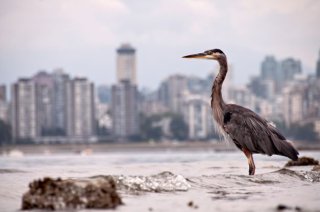
Online
MOOC Animal Behaviour in Conservation
How can we coexist with wildlife in our rapidly changing human-dominated world? The instructors behind Wageningen University & Research’s high ranking ‘Introduction to Animal Behaviour’ have created a sequel. Equip yourself with the skills to assess human-caused impact on diverse species. Learn to apply behavioural principles to design more effective conservation actions. Enrol now.
Enrol now on edX®
Why follow this course?
Biodiversity in crisis
Climate change. Habitat destruction. Overexploitation. Wild animals face anthropogenic threats from the growing human population and our increasing consumption rate. Biodiversity is declining, with over 40,000 species threatened with extinction - over a quarter of the species assessed. At the same time, some species have learnt to exploit new opportunities in human-dominated landscapes, leading to human-wildlife conflicts. We live in a shared world, and the only way forward is sustainable coexistence with wildlife. For this we vitally need the animal perspective.
Take the animal perspective
Developed by the makers of the popular MOOC ‘Introduction to Animal Behaviour’, this course helps you take the ‘conservation behaviour’ perspective in major conservation challenges, such as environmental change, human-wildlife conflict and wildlife reintroductions.
Design innovative conservation interventions
We will explore key concepts from animal behaviour and apply them to practical wildlife conservation issues. Such behaviour-sensitive management has led to successful conservation interventions:
- A wind farm with technology warning for migrating birds decreased soaring bird mortality to zero with a shutdown period of only 0.2–1.2%.
- A livestock grazing strategy avoiding cheetah communication hubs reduced livestock losses with 86%.
- A mammal translocation program taking neighbour relations into account led to 24 times more offspring for translocated individuals.
Through informative knowledge clips, case studies, interviews, and practical assignments, you’ll learn how you can use animal behaviour in conservation to effectively monitor threats, increase your understanding of the diverse responses to environmental change, and design innovative interventions.
Is this course for you?
For professionals working with wildlife, this course will build understanding of how animal behaviour mediates the impact of anthropogenic threats on animal populations. It will become clear how behavioural principles can be used to make behaviour-based management decisions.
Students of wildlife conservation or animal behaviour will be able to expand their knowledge into a complementary field and learn how to integrate academic knowledge of behaviour with threatened species conservation planning.
So, whether you are a wildlife conservation practitioner, a student in environmental or animal sciences, or simply someone with a general interest in animal behaviour or conservation, join us!
What you will learn
- Connect key behavioural concepts to relevant conservation challenges
- Understand how animals use behaviour to mitigate anthropogenic threats
- Recognize which behavioural traits can serve as threat and management indicators
- Identify successful examples of behaviour-based conservation management
- Use relevant resources to find species-specific information on biology and conservation challenges
- Design a basic species action plan incorporating a behaviour-based conservation action